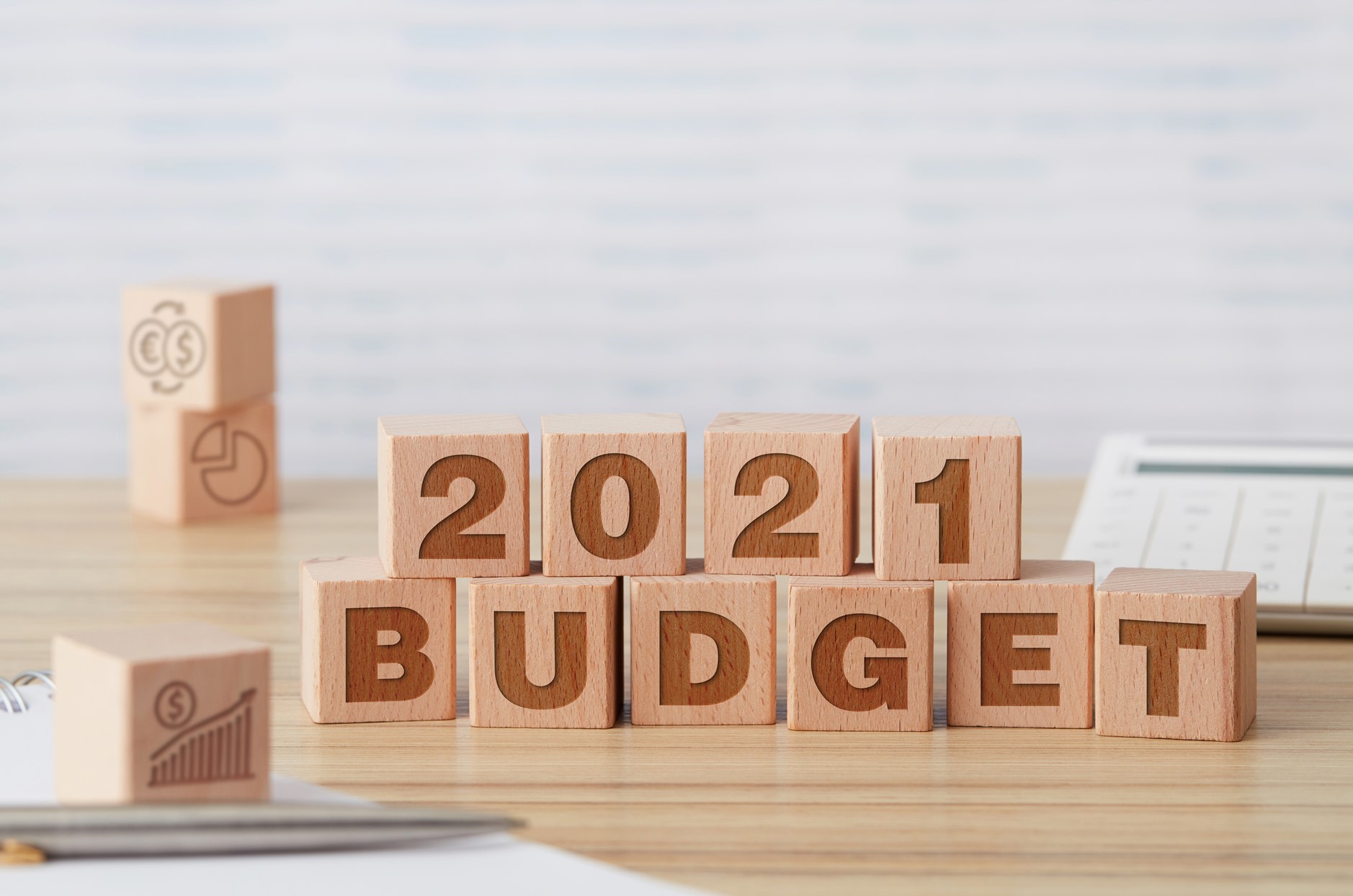In opening his speech, the Treasurer, the Hon Josh Frydenberg MP, declared ‘Australia is coming back’, with a big-spending budget outlined by the Morrison Government to continue to support Australia’s economic recovery.
In 2020, the Budget had a sense of wartime spending, reflective in the large spending surrounding it. The Treasurer has had close to a year to refine his messaging and policy response to COVID-19, which is clear from tonight Budget address.
With programs such as JobKeeper and JobSeeker being phased out in this fiscal cycle, the Treasurer has the opportunity to curb some spending, however maintaining current costly policies, such as the government’s proposed income tax cuts will require a strong Australian economy moving forward.
The Treasurer’s strategic usage of low-interest rates means the Government can borrow large sums of money without incurring the high-interest cost. This approach is considered risky by some economists. However, the Treasurer remains confident that Australia’s core economic strengths remain intact.
However international headwinds remain uncertain, such as Australia’s ongoing trade disputes with the People’s Republic of China and these could jeopardise the projected forecasts.
The prevailing opinion is that this budget is a win for low and middle-income earners, women, the aged care industry, those working on infrastructure projects and single parents, with key announcements focusing on driving economic recovery from the bottom up.
Working through key portfolio areas, we have highlighted big-ticket items and critical promises to ease your navigation of a content-heavy time in the election cycle.
A copy of the Treasurer’s 2020 Federal Budget speech can be found here.
Health and Aged Care
In the Health Sector, the Budget has allocated $878 million to new listings on the Pharmaceutical Benefits Scheme.
Those in regional areas, as well as women and people in the aged care industry, have also received significant funding from the health portfolio, with the Morrison Government announcing:
- $18 billion to implement the Government’s response to the Aged Care Royal Commission including increased funding for workforce training and securing private operators;
- $13.2 billion over four years for the National Disability Insurance Scheme.
- $3 billion to mental health, including programs for BeyondBlue, Lifeline and Kidshelpline. In addition, Headspace will extend its model to support people over 25 years old;
- $13.2 billion over four years for the National Disability Insurance Scheme;
- $350 million across the next four years for women’s health initiatives including cervical and breast cancer, endometriosis and reproductive health;
- $80.9 million over five years to continue supporting the Strong Rural Health Strategy with $65.8 million will be going to the Rural Health Bulk-Billing strategy.
- $65 million to introduce extra incentives, including increased consultation rates, to lure doctors to rural and regional areas.
Infrastructure, Regional Development and Cities
Overall, the Morrison Government has committed a further $15 billion to the existing 10-year Infrastructure Investment Program, with States and Territories receiving funding for a range of projects.
We have broken the announcements down into a state-by-state analysis below:
- NSW: The Blue Mountains region is the big winner from this round of infrastructure spending, with the Great Western Highway Upgrade due to receive two-thirds of the $3 billion allocated to NSW roads projects in this year’s Budget. In addition, the Princes Highway and the Mount Ousley Interchange will receive a combined $640 million of funding.
- QLD: Queensland Roads will receive over $1 billion of funding to improve Inland Freight Routes as well as upgrades to the Bruce Highway and the duplication of the Cairns Western Arterial Road.
- WA: The Prime Minister has announced that West Australian infrastructure is set to benefit by $1.3 billion, announcing strategic infrastructure projects including $347 for rail upgrades, $200 million for upgrades to the Great Eastern Highway and $160 million for WA Agricultural Supply Chain Improvements.
- SA: The North-South Corridor has received a further $2.6 billion to complete a motorway from Darlington to Anzac Highway. Regional SA will also receive significant funding, with over $300 million allocated to the Truro Bypass and the Augusta Highway duplication.
- ACT: The Government has committed a further $167 million for major projects in Canberra including the second stage of the Light Rail project and the duplication of William Hovell Drive in the Territory’s northern suburbs.
- VIC: To reduce truck congestion on Victorian roads, the Morrison Government has committed $2 billion for the Melbourne Intermodal Terminal, as well as a combined $500+ million for road upgrades to Parkenham and Monash Roads.
- TAS: The Bass Highway will receive $80 billion for safety and freight efficiency upgrades, with an addition $92 million for the duplication of the Kingston Bypass and upgrades to the Rokeby and South Arm Roads.
- NT: The National Network Highway will receive $150 million of funding for the Phase 2
Additionally, the Government will invest $250 million into the Building Better Regions Fund to improve regional community infrastructure projects and create jobs in regional infrastructure.
Housing
The Morrison Government announced incentives to introduce new people into the housing market, with 10,000 single parents now able to secure a home loan with only a 2% deposit, with the Government to guarantee the remaining 18% and ensure that single parents avoid home loan insurance.
In addition, the New Home Guarantee will be extended for a further year, giving another 10,000 first home buyers access to purchase or build a new property with only a 5% deposit.
Overall, the investment in affordable housing will total $2 billion.
Education, Jobs, Skills and Immigration
The Morrison Government is continuing to push its skills and employment-focused recovery to the COVID-19 pandemic, with a significant package announced aiming to ensure that people can access the necessary services to reskill and re-join the workforce. These measures include:
- $53 million for private higher education providers to introduce extra short course places and an innovation fund to digitise the delivery of courses;
- The removal of the work hour limits for international students in Australia who are employed in the tourism or hospitality sectors;
The Morrison Government is continuing its commitment to JobTrainer Fund to upskill seekers and young people. $506 million is being invested to create more than 170,000 new apprenticeships and traineeships. Some of these measures include:
- Providing training for 5,000 places for women in non-traditional trades
- Creating 2,700 more places in Indigenous girls’ academies to help them finish school and enter the workforce.
The Government has pledged $19 billion to fund universities in 2021-22 in light of the impact of the recent pandemic on Australia’s tertiary education system.
Childcare
The childcare subsidy, which was due to expire later this year will be revamped by the Morrison Government, with $1.7 billion of funding allocated in addition to the existing $10.3 billion. The new subsidy will remove income caps on couples as well as benefit families with multiple children utilising the childcare sector.
The Government has also committed $2 billion to fund preschool education, with a focus on reforming the national curriculum to improve participation.
Defence
Defence spending has taken a back seat, following the significant funding allocated to the 2020 Defence Strategic Update in last October’s Budget. The most notable announcement is the $747 million investment to upgrade military training bases in the Northern Territory. The commitment forms part of the Government’s broader $8 billion defence infrastructure fund for the Northern Territory.
- The Government is providing $1.9 billion over the next decade to strengthen our national security, law enforcement and intelligence agencies. The Treasurer reiterated the Government’s commitment to the previously announced $270 billion associated with the 2020 Defence Strategic Update.
- Cyber Security Innovation Fund is receiving $43.8 million over the next three years to train the next generation of cybersecurity experts. A digital skills cadetship trail, which combines workplace and vocational training will help develop Australia’s skills in the digital defence space.
Other Key Announcements
- A new ‘patent box’ system will be implemented, providing companies with a tax rate of 17% when using Australian registered patents, almost half of the current company tax rate.
- The Prime Minister’s reshuffle, in which women were a focus, has been reflected in this year’s Budget, with $1.1 billion for women’s safety services including $164 million for victims of family and domestic violence.
- The Morrison Government is extending the tax cuts and stimulus measure for low- and middle-income earners will receive up to $1,080 for individuals or $2,160 for couples. These new measures will be extended until 30 June 2023.
- Local brewers and distillers will be able to benefit from larger tax breaks, with the Government announcing that distillers will be able to claim a full refund on the excise they incur and the cap on the excise will be increased to $350,000 from $100,000.
- The rising prominence of the digital economy through COVID-19 has prompted the Morrison Government to announce measures to encourage small businesses to embrace the digital age. The $1.2 billion Digital Economy Strategy includes tax breaks for businesses, digital cadetships and $500 million on government digital services.
- $480 million will be invested in new funding for environmental protection including upgrading recycling capabilities, creating jobs in environmental protection and incentives to reduce waste that is sent to landfill.
- The Government will establish a $61.1 million new National Recovery and Resilience Agency to lead Australia’s response to natural disasters.
- $170 million will be invested into strengthening internet and mobile coverage in regional Australia, especially in areas that are prone to bushfires.
- More older Australians will be able to utilise the Government’s ‘downsizer scheme’ with the age cap lowered from 65 to 60. The Scheme allows people to sell their family homes and make a one-off contribution to their superannuation, in order to incur a lower rate of tax and preserve more money for their retirement.
- The Government will remove the current $450 per month minimum income threshold for the superannuation guarantee.
Latest posts by Nexus APAC (see all)
- United Kingdom General Election 2024: An Overview - April 15, 2024
- Australian Voters Go to the Polls - February 26, 2024
- Secretaries of Federal Departments – An Overview - February 1, 2024



